I’ve now spent around three weeks living in Singapore, and I am convinced that this has been one of the best decisions of my life. For all that I felt I was leaving behind — friends, projects — much has rushed forward to take its place. A lesson best learned head-on, it seems.
Writing this on the bus to my first multi-day trip out of the country (starting in Kuala Lumpur, and then onto Penang, both in Malaysia). Expect more observatory and descriptive writing this semester regarding travel. My goal is to pull out the small details in people and place that you maybe won’t find on your first Google search of Singapore or other parts of Southeast Asia.
More broadly, this semester I’ve become interested in empathy. Already in three weeks, I have reaped the fulfillment of living in a country boasting a familiar language and an unfamiliar culture. In peering through this half-open door, I have been fascinated by the cultural and political undercurrents of even the most mundane of objects, places, and events — how they uncover what people might care about, or what the government might desire that people care about. I have come to realize that empathy does not just arise in human-to-human interaction, but also in the human-to-environment. (Sounds profound, but it isn’t really. More of a reaffirmation of the obvious once you think about it a bit).
I’ll share some of my healthiest guesswork below, as I am happy to speculate away — of course, with a clear forewarning that I am speculating. Note then that I am not going to really dive into critique. Instead I’ll make good faith attempts to represent intentionality and motivation. So in more ways than one this writing will be incomplete.
Public Transit
The public transit in Singapore works beautifully. There are dedicated metro stations for nearly all the major landmarks, centers, malls, and stadiums. Between the metro and the bus systems the coverage is immaculate, and Apple Pay is fully integrated into transit. You tap in when you get on and you tap out when you get off, and you get a charge at the end of each day.
For the sake of cleanliness, on public transit there is no eating or drinking allowed (even water), and these offenses come with a hefty fine. I was amused to notice an advert specifically banning durian as well. There are no trash cans at the station.
Many MRT stations are adjoined to a food or shopping center. The Kent Ridge MRT nearest NUS, for example, hosts a big food court with a wide selection of pastries, hawker-style food, and fruit juice. The City Hall MRT is placed neatly within a HUGE array of shops — photo booths, 7/11, convenience stores, clothing, etc. I suspect that the government is interested in fashioning public transit as not just a liminal space — to get from A to B — but also a community space, one that you lose when you decide to Grab (Uber for SE Asia) or use a car (which also costs a boatload of money).
Anti-vaping and anti-smoking ads are plastered all over the metro station walls. These ads first caution that these activities are illegal, and then argue that they’re also harmful to health.
This is curiously framed. I was discussing with my friend from the UK that in both our countries the harm to health is a much stronger argument than the illegality of the activity. . .
This is all to say, not only does it seem to me that the government believes in regulating social norms with a fine degree of precision, but they also seem to trust that conformity rules in Singaporean culture.
One of the other metro ads related to the police, which I’ll talk about next.
Police system
Here’s that metro ad I was talking about.
Here, police are discussed as serving in a manner that is “above and beyond” — in a decidedly progressive tone (at least in the American sense). In the US, though, fighting injustice and protecting the vulnerable is not always the same thing as maintaining order. They are usually the opposite.
The government has also created what they call a “police heritage trail,” a collection of several different historical sites scattered across the city center that exhibit the history of the Singaporean police force. A few weekends ago I took 4 hours to go through as many of them as possible.
I didn’t see anyone else also studying the sites whilst going around, but they were well enough integrated into the city that it didn’t matter so much (but is worth noting). But I didn’t get much out of the self-guided tour other than the fact that Singapore has become a much safer city since its inception.
“The Singapore police force is a ‘world class crime-fighting organisation’, said 87 per cent of respondents in a latest survey revealed by Home Affairs and Law Minister K. Shanmugam. — Strait Times
While it is undoubtable that the police played some role in ensuring Singapore’s status as a safe haven amongst cities and countries worldwide, more interesting to me is the “how.” I especially find it notable that Singaporeans maintain a much stronger and more sustainable relationship with their police than their American counterparts. The DOJ has even published on the “Singaporean model” in relation to the American police force (main point: community policing can work) that deserves a skim or a read.
Firstly, all males must complete two years of national service (usually right after high school and right before university), and one of their options is the police force. Conscription is an infringement on civil liberties that Americans could never accept, but on the Singaporean side, I imagine that the practice creates a certain level of transparency into police practices that breeds trust (maybe I’m wrong, but I think in relative terms I’m right). Or at the very least, knowing that every single male has a random chance of being selected for police work can anchor trust in policing via social proximity, while in the US I suspect that distrust stems fundamentally from alienation of police from their communities of practice (especially along lines of race).
Secondly, there are strong community components to police practice. Recall the “defund the police” debate in the US in summer 2020 — advocates argued for a redistribution of resource toward unarmed community response instead of armed police response. Singapore has integrated community response into policing itself, it seems. Training also seems quite rigorous, especially in comparison to the US.
Floral diplomacy
On my first Wednesday in Singapore I visited the Botanical Gardens, a vast and beautiful landscape of flora and fauna nestled gently within the city and stationed right next to an MRT stop.
We came across a VIP Orchid Garden that housed hybrid orchids, bred specifically in honor of special guests to the state. There were hybrid orchids for Kamala Harris and Joe Biden (from his vice presidency), for example.
I find these gestures of goodwill in diplomacy to be a bit stilted sometimes, but I actually really loved this. The creation of an entirely new flower, a marriage of two separate orchid species, produced beautiful results. But maybe my fondness here was for lack of research — I had no idea about Singapore’s relationship with orchids.
Anyway, that’s all for now. A more casual writing style this semester with these posts — which honestly feel more travel-blog-like, but I’m ok with that. More to come soon!

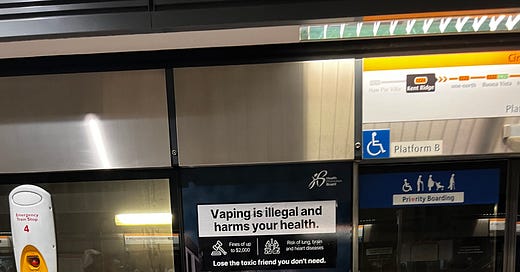



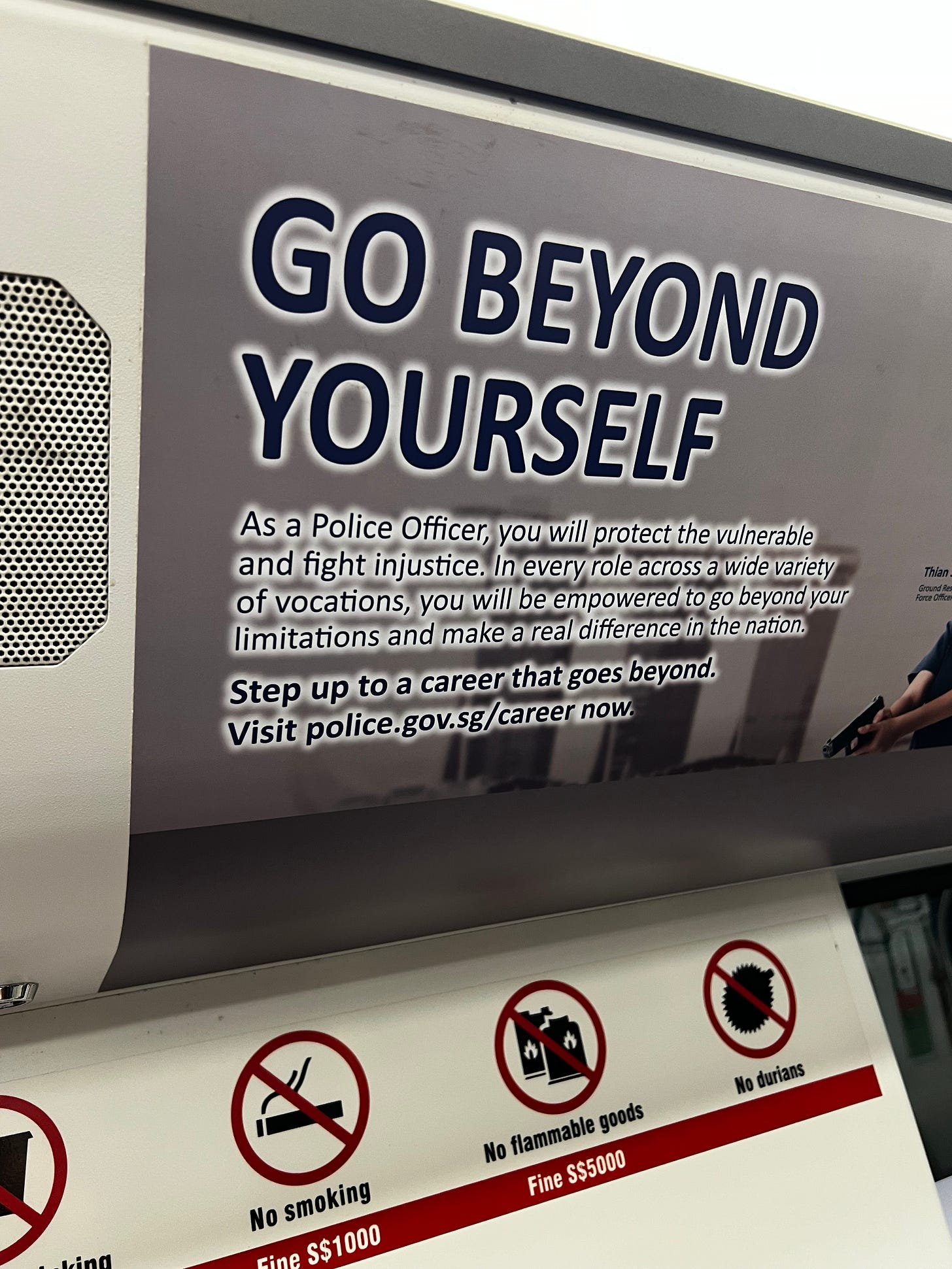
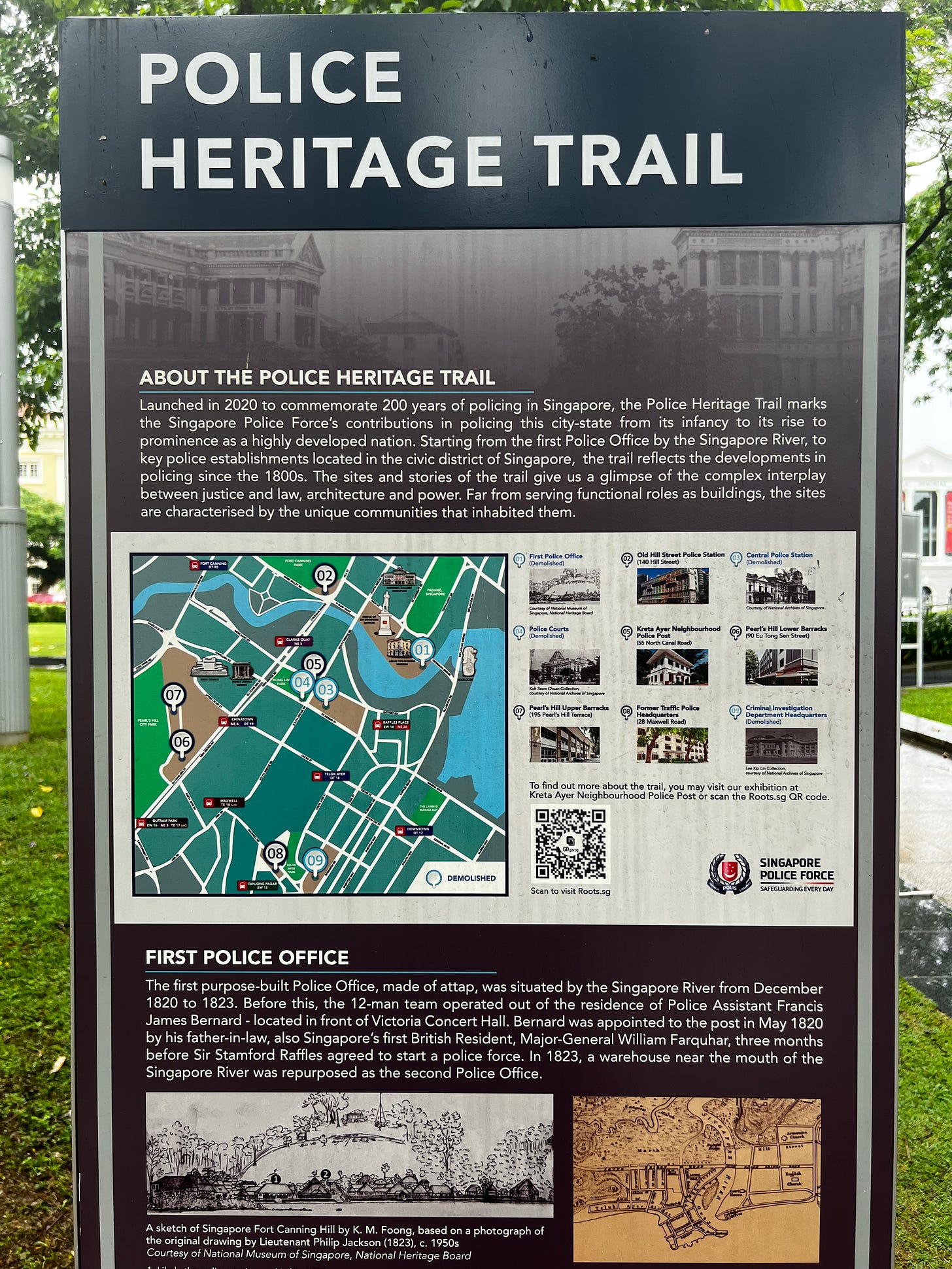
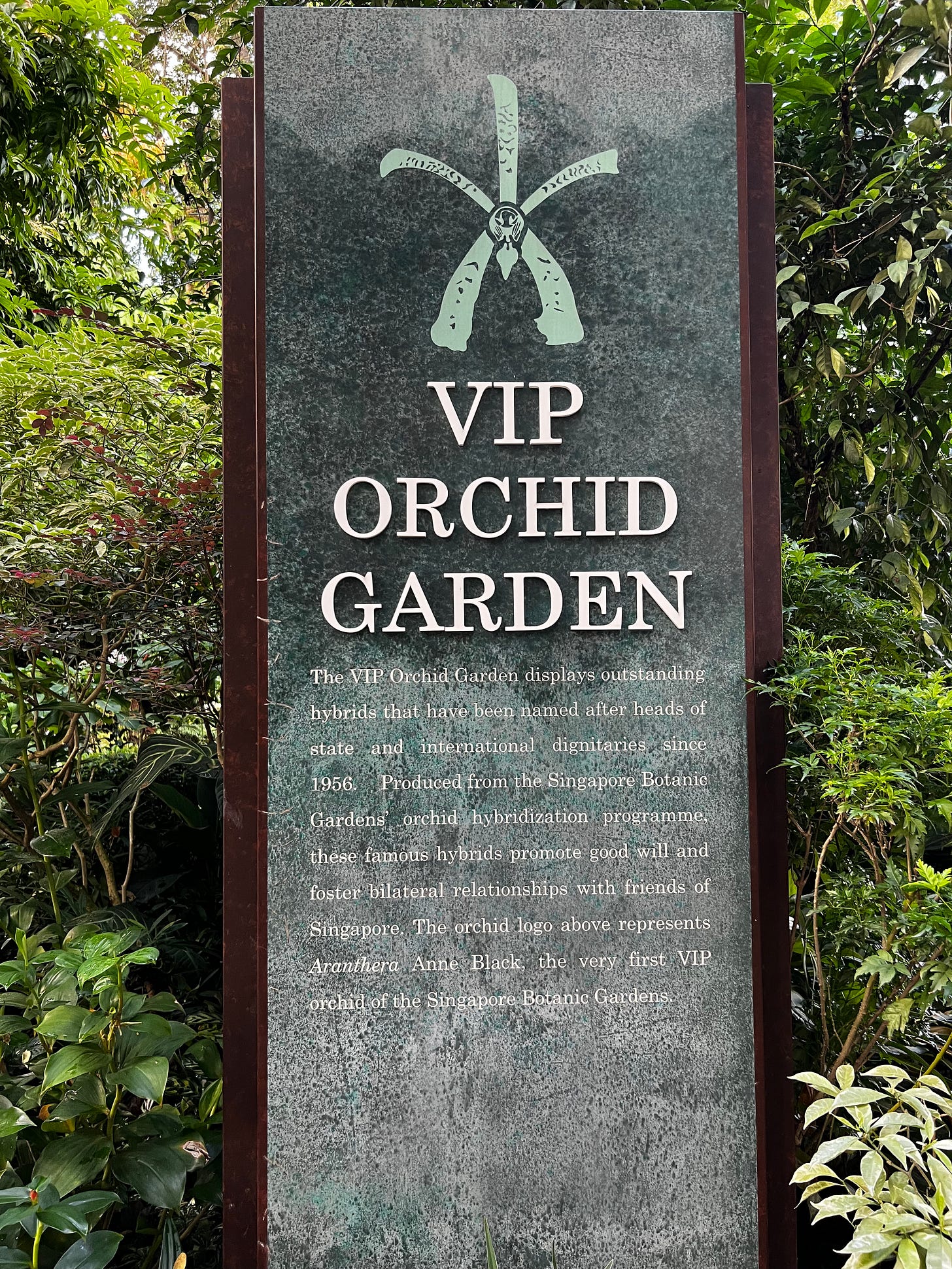
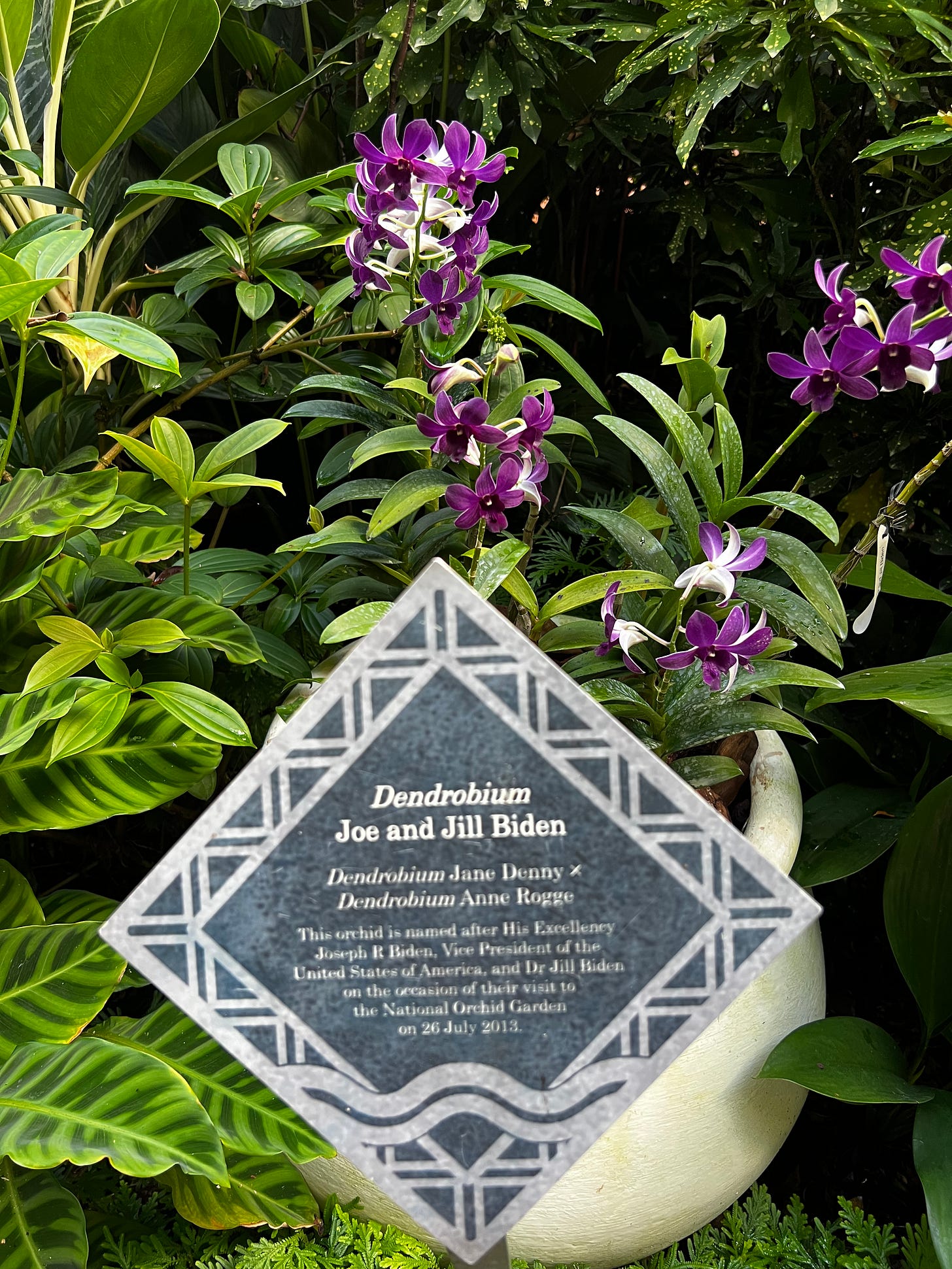
I was a huge fan of the orchid garden too when I was in Singapore :))
love it! glad you’re enjoying your time! looking forward to more of these